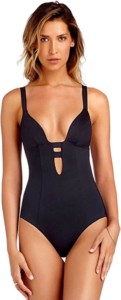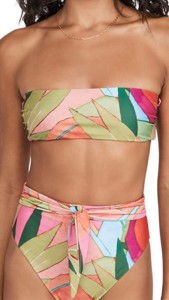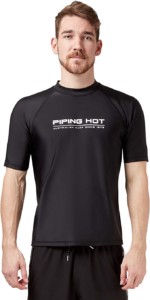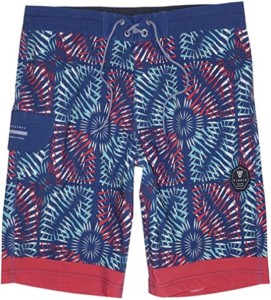
6 Best Sustainable Swimwear Brands
We are reader-supported. When you buy through links on our site, we may earn affiliate commission.
Eco-conscious retailers are making it easy to shrink your carbon footprint by shopping. Before the sustainable wave influenced the global market, consumers turned to thrift stores and consignment shops to access low-impact items. Today, shoppers’ options are broader and greener. Better yet, sustainable swimwear brands are making it easier to have an eco-friendly summer.
Companies are reducing their manufacturing, distribution and material-related pollution by increasing the sustainability of their practices. Individuals can improve the eco-friendliness of their wardrobe this summer by purchasing conscious swimwear over fast fashion. Before exploring the best sustainable swimwear brands, it’s vital to examine the challenges of conventional production practices.
Fast Fashion and Environmental Degradation
Since researchers began exploring the effects of the textile industry on environmental conservation, they unveiled one key player – plastic. Companies started developing synthetic fabrics to lower production costs and increase items’ durability. It takes the sea nearly 450 years to degrade plastic materials.
The ocean and pools contain elements that quickly break down cotton and other natural fabric components. Manufacturers increased the longevity of swimwear by using synthetic textiles. The development of the materials creates atmospheric, surface and marine pollution, degrading its sustainability.
Manufacturing and disposing of plastic generates nearly 850 million tons of greenhouse gas emissions annually. When the air pollutants invade the atmosphere, they alter Earth’s natural temperature control process. Organically, the atmosphere absorbs solar radiation, produces heat, warms Earth’s surface, recollects excess energy and emits it to space.
Greenhouse gases have a higher sunlight-to-heat exchange rate and trap excess energy in the atmosphere for extended periods. The overproduction and confinement of heat increases the planet’s temperature over time. Plastic materials also create surface-level pollution deriving from environmentally degrading waste management practices.
When individuals throw away bathing suits made of plastic fabric rather than recycling, repurposing or donating them, they increase landfill pollution. During the transportation process, from single-stream garbage bins to waste management facilities, materials often fall off trucks and end up in the ocean. When plastics pollute the sea, they harm marine species.
The most significant interference effect of marine plastic derives from ingestion. Many species misidentify ocean plastic and microplastics as food, consuming the material. Fish, turtles, birds and more become entangled in and suffocate on the items.
Various brands evaluated the ecological challenges deriving from the fashion industry and developed sustainable alternatives. Today, six companies produce the best sustainable swimwear with low to no environmental impacts. Consumers can shrink their carbon footprints this summer by supporting eco-conscious brands over fast fashion companies.
1. Vitamin A
Vitamin A is a sustainable swimwear company selling bikinis, one-pieces and coverups. The company uses Ecolux material created from repurposed nylon fibers. Manufacturers generate over three-quarters of each swimsuit from recycled items, freeing up landfill space.
The swimwear company also donates a portion of its profits to ocean protection programs. It additionally limits the number of emissions created in the production process by maximizing the versatility of each piece. Designers create each bikini piece for mixing and matching, creating four different swimwear options out of two bikinis.
2. Mara Hoffman
Mara Hoffman also designs bikinis, one-pieces and beachwear using recycled materials. All products are derived from recycled nylon. The manufacturers are located in the U.S, decreasing transportation emissions for American consumers.
3. Speedo Powerflex Eco
Speedo hopped on the sustainable bandwagon and created a line of eco-conscious bathing suits. It developed swim jammers, bikinis and one-pieces from 100% recycled nylon called PowerFLEX Eco. Designers created the swimwear for sports purposes, increasing their compression features.
Unlike some other products on the market, Speedo’s eco-friendly swimwear is machine washable. It also lasts longer than some competing products. When individuals invest in PowerFLEX Eco suits, they decrease atmospheric and landfill pollution.
4. Piping Hot
Piping Hot is a swimwear brand removing plastic from the oceans. It designs swim trunks, rash guards, briefs and more from recycled plastic. The company converted 9.8 million bottles into beachwear, saving marine ecosystems and landfills.
Manufacturers at Piping Hot dye their items with low-impact substances, using efficient processes. They also collect used swimwear when consumers finish using them and recycle them into new products. The company additionally values water conservation, decreasing resource waste in their production practices.
5. Outerknown
Outerknown creates swim trunks from eco-conscious materials. Its products are derived from 100% recycled polyester and offer quick-dry features. The manufacturing facilities also hold the Fair Trade Certification, symbolizing the environmental and employment ethics associated with production.
6. Vissla
Vissla is another sustainable boardshorts brand using innovative materials. The company develops eco-friendly polyester fabric from coconuts. Another 50% of its materials come from recycled polyester, reducing landfill pollution.
The boardshorts have a long life expectancy, decreasing waste production over time. Vissla’s designers also created their pieces to reduce odor, increase breathability and stretch for optimal performance. Additionally, the items have an ultraviolet protection factor (UPF), protecting consumers from the sun.
Sustainable Clothing Certifications
Consumers can enhance the sustainability of their swimwear by looking out for specific certifications. Professionals closely regulate Certified B Corporations based on the social and environmental ethics of their production practices. They also contain optimal transparency and accountability strategies to educate customers.
The Global Organic Textile Standards (GOTS) also signifies a swimwear company’s eco-consciousness. Professionals evaluate the beginning of a product’s life cycle, ensuring the ecological conservation of material production. Companies must source 70% of their fabrics from organic supplies to gain the GOTS certification.
Cradle to Cradle created another sustainable certification that signifies the conscious development and use of products. The company evaluates an item’s material health, reuse, clean energy source, emission management, water conservation and social ethics. Products can earn the certification by using nondegrading dyes and chemicals, preserving Earth’s natural state.
Products must also derive from waste-limiting resources, like recycled materials and solar-powered manufacturing facilities. Decreasing surface and atmospheric pollution significantly increases a company’s sustainability. When individuals purchase swimwear from companies holding the certification, they may shrink their carbon footprint.
Breaking the Cycle
Consumers become loyal to certain brands. Some swimsuits may fit your body better than others, and it is challenging to abandon those items. Fortunately, there are methods of breaking your fast fashion purchasing cycles and adopting sustainable shopping habits.
Fast-fashion swimwear can be more cost-effective than sustainable alternatives. When you are purchasing items from eco-friendly brands, it is essential to remember the longevity of each article. Green manufacturers develop products that last, helping consumers buy less and wear more.
Individuals can also look for reversible swimsuits to support the desire for diversity in their closets. Some bikinis offer different patterns inside and outside of their tops and bottoms. The articles provide four unique pattern combinations for the price of one.
Shopping for sustainable items can be overwhelming when you are unsure of what to look for. Individuals can increase consumption efficiency by jotting down materials and certifications to purchase over less eco-friendly options. It is also helpful to identify an item’s environmental impact before making your purchase.
Evaluating the emissions, surface pollution, marine microplastics and more can influence a buyer’s purchase decision. Many sustainable companies also support workers’ rights and ethics, supporting those in manufacturing facilities. Breaking the fast-fashion consumer cycle is challenging, but it supports climate change prevention.
Shrinking Your Footprint With Swimwear
Consumers can increase the eco-friendliness of their closets by purchasing from the six best sustainable swimwear brands. Online and in-person shops offer equally efficient products, limiting atmospheric pollution. When individuals consciously buy beachwear, they can reduce their carbon footprints and protect the planet.
Share on
Like what you read? Join other Environment.co readers!
Get the latest updates on our planet by subscribing to the Environment.co newsletter!
About the author

Jane Marsh
Starting from an early age, Jane Marsh loved all animals and became a budding environmentalist. Now, Jane works as the Editor-in-Chief of Environment.co where she covers topics related to climate policy, renewable energy, the food industry, and more.











